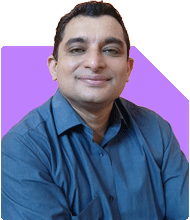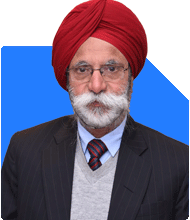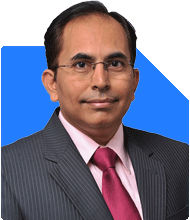Omkeshwar Singh | Answer |Ask -Follow
Head, Rank MF - Answered on Dec 14, 2021

I am 40 years old and hold below MFs as SIP.
I seek your view whether to hold or redeem in the current market scenario.
| Fund | SIP Amount |
| ABSL Pure Value Fund (G) | Rs 5,000 |
| ABSL Focused Equity Fund (G) | Rs 5,000 |
| HDFC Midcap Opportunities | Rs 2,500 |
| ICICI Pru Bluechip Fund | Rs 2,500 |
| Nippon India Small Cap Fund (G) | Rs 5,000 |
| Canara Robeco Emerging Equity Reg (G) | Rs 5,000 |
| HDFC Top 100 | Rs 7,500 |
| ICICI Pru Multi Asset (Dynamic Fund) | Rs 2,500 |
| ICICI Pru Value Discovery | Rs 2,500 |
| IDFC Multi Cap Fund-Growth (Regular Plan) | Rs 2,500 |
| L&T India Value Fund | SIP, Hold |
| Nippon India Multicap Fund - (G) | SIP, Hold |
| SBI Focused Equity (G) | Rs 2,500 |
| Nippon India Large Cap Fund Growth | Rs 5,000 |
| UTI Value Opportunities (G) | SIP, Hold |
| Quantum Long Term Equity Value Fund (D) | SIP, Hold |
| Kotak Flexicap Growth Plan | Rs 5,000 |
| Mirae Emerging Bluechip | Rs 5,000 |
| Axis Bluechip Fund | Rs 5,000 |
| UTI Flexi Cap | Rs 5,000 |
| Total | Rs 67,500 |
You may like to see similar questions and answers below
Omkeshwar Singh | Answer |Ask -Follow
Head, Rank MF - Answered on Jan 06, 2021
Omkeshwar Singh | Answer |Ask -Follow
Head, Rank MF - Answered on Jan 17, 2020
Omkeshwar Singh | Answer |Ask -Follow
Head, Rank MF - Answered on Dec 20, 2019
Omkeshwar Singh | Answer |Ask -Follow
Head, Rank MF - Answered on Oct 13, 2022
Ramalingam Kalirajan |10902 Answers |Ask -Follow
Mutual Funds, Financial Planning Expert - Answered on Dec 09, 2024
Anu Krishna |1749 Answers |Ask -Follow
Relationships Expert, Mind Coach - Answered on Dec 17, 2025
Anu Krishna |1749 Answers |Ask -Follow
Relationships Expert, Mind Coach - Answered on Dec 17, 2025
Radheshyam Zanwar |6748 Answers |Ask -Follow
MHT-CET, IIT-JEE, NEET-UG Expert - Answered on Dec 17, 2025
Anu Krishna |1749 Answers |Ask -Follow
Relationships Expert, Mind Coach - Answered on Dec 17, 2025
Dr Shakeeb Ahmed Khan |184 Answers |Ask -Follow
Physiotherapist - Answered on Dec 17, 2025
T S Khurana |538 Answers |Ask -Follow
Tax Expert - Answered on Dec 17, 2025
T S Khurana |538 Answers |Ask -Follow
Tax Expert - Answered on Dec 17, 2025
Janak Patel |72 Answers |Ask -Follow
MF, PF Expert - Answered on Dec 17, 2025
Ramalingam Kalirajan |10902 Answers |Ask -Follow
Mutual Funds, Financial Planning Expert - Answered on Dec 17, 2025
Samraat Jadhav |2511 Answers |Ask -Follow
Stock Market Expert - Answered on Dec 17, 2025





























